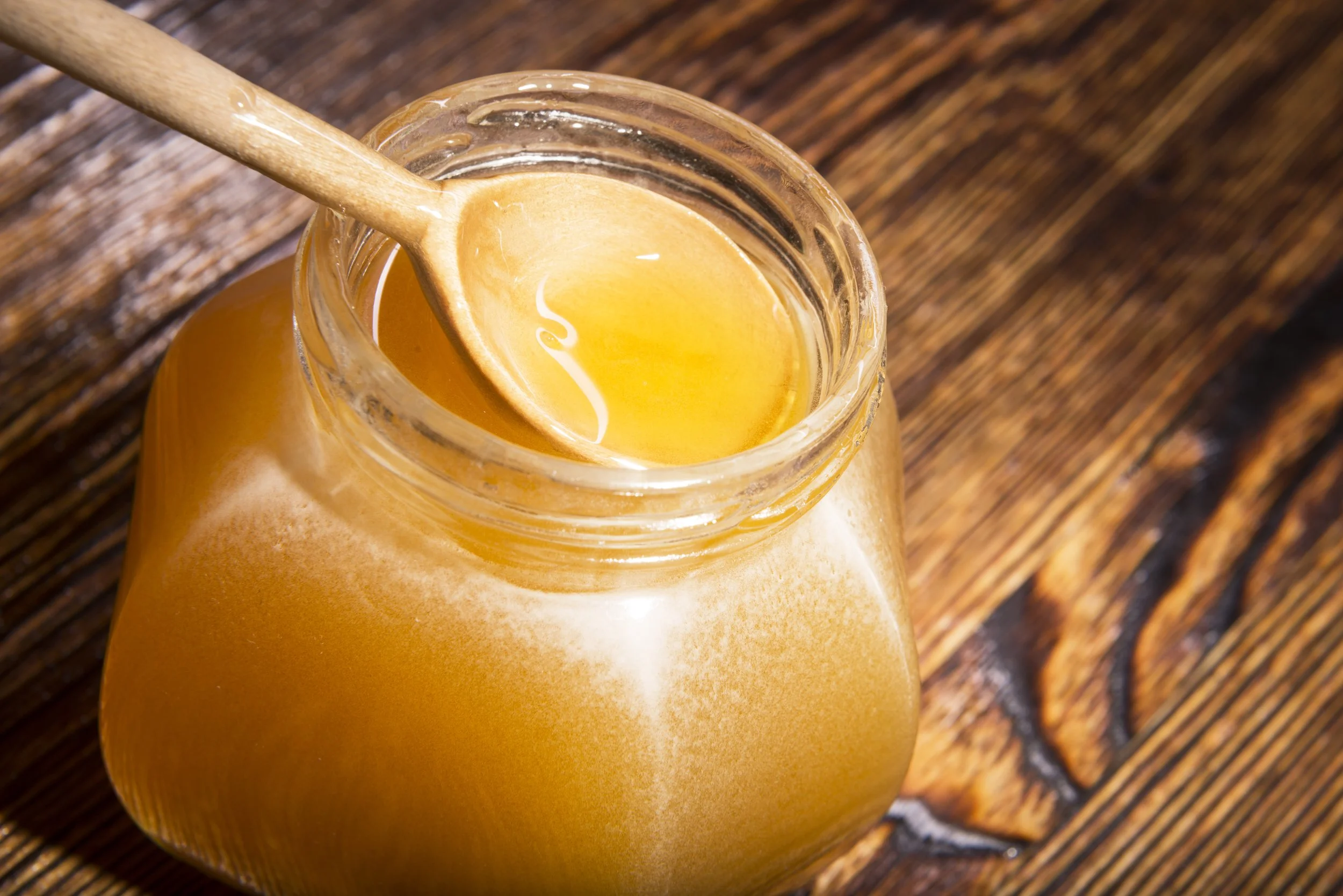1. The Mānuka bush (Leptospermum scoparium), native to New Zealand, and its nectar contains dihydroxyacetone (DHA) which bees convert to methylglyoxal – or MGO for short – a compound with antibacterial and antimicrobial properties and only found in mānuka honey.
2. This is where it gets a bit special: When stored, the DHA content goes down, while the MGO content goes up (though, not forever!).
3. Before scientists understood that MGO was the ‘secret’ ingredient in Manuka honey, the antibacterial and antimicrobial properties were referred to as NPA, or non-peroxide activity (to differentiate it from the ‘peroxide’ activity they could detect, which is a series of anti-bacterial properties found in all honeys) and UMF, or Unique Manuka Factor.
4. Manuka flowers blossom in the (New Zealand) summer and only for 6 to 8 weeks.
5. As much as 80% of honey sold as Manuka is essentially fake. New Zealand produced 1,700 tonnes in 2014, but somehow 10,000 tonnes were sold…
6. The New Zealand government is taking its honey seriously to prevent people passing regular honey off as Manuka (and charging more!) and to ensure the quality. So now, any product labelled as Manuka honey exported from New Zealand must have passed the MPI 5 tests.
7. This is where it gets a bit CSI: samples of honey are tested for four active ingredients, including levels of MGO, as well as undergoing DNA testing to prove the Manuka you buy is authentic.
8. The New Zealand government now certifies all Manuka honeys according to the amount of MGO they contain (as parts per million). UMF ratings range from 5 to 15 typically, MGO from 100-550ppm. Both MGO and UMF are trademarked. Formerly, Manuka honeys labelled as TA (Total Activity) or Active were graded according to a mix of NPA and peroxide activity.
9. Not all regions produce Manuka bushes that contain DHA – another reason why testing is really important.
10. Of course, we can’t stop bees collecting nectar from wherever they like. This is why there are two types of Manuka honey.
Monofloral (ie, one flower) applies to honey that has a very high level of Manuka in its DNA
Multifloral (ie, many flowers) is still mainly made up from nectar collected from the Manuka bush, but the bees have foraged from a greater number of flowers.
11. There is no such thing as a Manuka bee – in fact, the bees aren’t even native to New Zealand. Hives are populated by your bog-standard European honey bee, brought over in 1839 as native bees were not suitable for honey production.
12. There are three types of bee: The Queen, who runs the show and is everyone’s mum; Workers – an all-female crew that build and protect the hive and does all the foraging (these are the bees you see); and Drones, male bees whose purpose is to mate with the Queen and are kicked out of the hive in winter when the colony goes into survival mode.
13. Bees will fly up to 7 kilometres from their colonies, so hives are placed in areas where Manuka bushes are abundant.
14. Static electricity can help with pollination; bees can take on a natural positive charge as they fly about, while plants often have a negative charge. When they meet, pollen can be attracted and ‘stick’ to the bee.
15. The average beehive is a snuggly place – the temperature inside is around 35-40 degrees Celsius.
16. Don’t worry, you’re not stealing food… healthy, ‘kept’ bees can produce two to three times more honey than they need if they’re given enough storage space.
17. The average worker bee lives for around six weeks and, in that time, will fly around 366 miles
18. In its lifetime, a honey bee can produce around a 12th of a teaspoon of honey.
19. Archaeologists examining an Ancient Egyptian tomb found a cache of 3,000 year-old-honey. And it was still edible!
20. New Zealand’s Kakariki parakeets have been seen chewing on Manuka leaves then applying the mush to their feathers – apparently to get rid of parasites.





